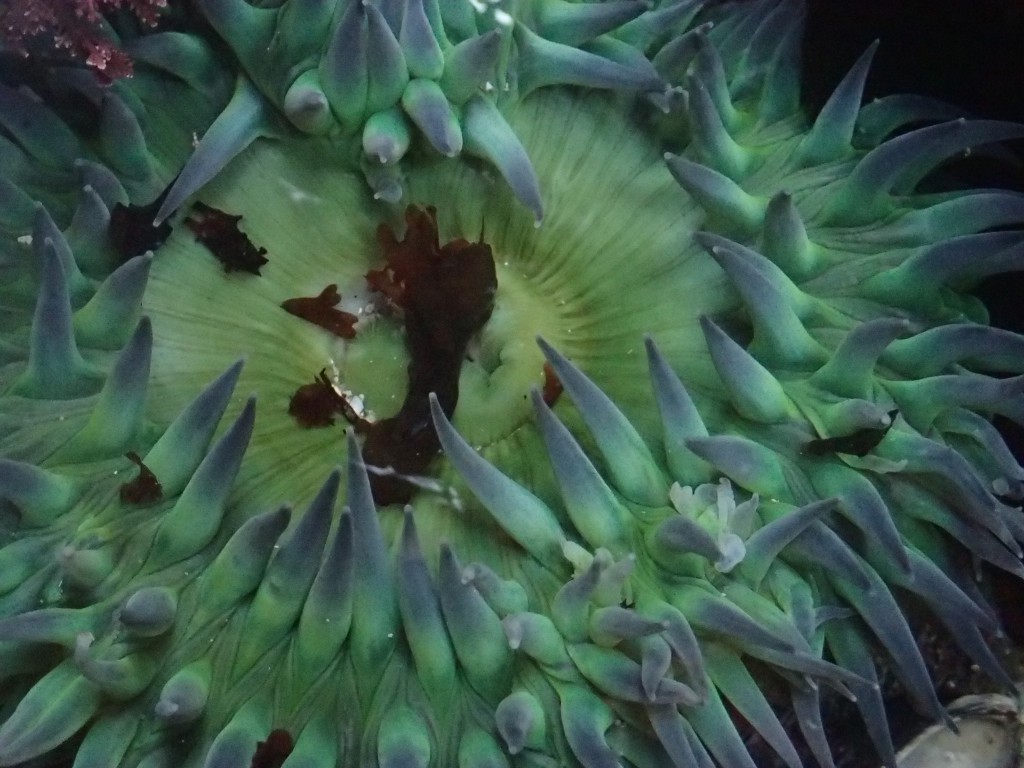. . . taking a small group of highly motivated students into the field!
My invertebrate zoology class this semester has only 10 students, which allows me a lot more freedom to improvise on the fly and actually participate in the course instead of having to stand back and supervise 30 of them at the same time.

27 October 2015
© Allison J. Gong
Their job was to interview at least six marine invertebrates and suss out answers to the Big 6 questions: Who? What? When? Where? Why? and How? In other words, to do a small bit of preliminary ecological investigation into animals they don’t already know much about. Some of the students also used the time to scope out the site for their independent research projects, which they will be starting soon.
. . . serendipity!
This past couple of classes I lectured on Platyhelminthes and Nemertea, and we saw both on the field trip.
The flatworm, Eurylepta californica, was spotted by a keen-eyed student, who thought at first it was a nudibranch but then noticed the ruffling edge and decided it must be something else.

27 October 2015
© Allison J. Gong
This individual was a bit less than 2 cm long. I’ve only seen it at Point Pinos. Such a cool animal!
Some day I want to find one of these at a site where I can collect, and bring it back to the lab for closer observation.
On each of these class field trips to the intertidal there’s at least one conversation that goes something like this:
- Student: Allison! I found this thing! What do you think it is?
- Me, from several rocks over: Well, what does it look like?
- Student gives a vague description, which usually isn’t very helpful.
- Me: Is it alive?
- Student: I think so.
- Me: Color?
- Student: Sort of orange. (or brown or purple or whatever)
- Me: Shape? Size?
- Student: This big (holds up fingers or hands to indicate size, then describes shape).
- Me: Is it hard or squishy?
- Student: I don’t want to touch it! Is it going to hurt me?
- Me: Not unless it’s a big crab. Just touch it and tell me what it feels like!
- <pause>
- Student: Hey, it didn’t hurt me!
This conversation occurs as I make my way over to see what it is. Eventually I can take a look at the whatever-it-is and explain as best I can. The nemertean that we saw yesterday resulted in a conversation similar to this, but the student had pretty much decided on her own that she had found a nemertean. By the time I made it over to where she was pointing the worm had just about disappeared into a mussel bed, which is where they hang out. I could see enough to determine that it was Paranemertes peregrina.
Nemerteans are unsegmented, slimy, predatory worms that feed by shooting out a sticky proboscis and wrapping it around prey. Some have a stylet at the end of the proboscis with which they can repeatedly stab the prey and inject toxins. They may not be much to look at, but watching them in action should make you glad that you’re not a small animal.
. . . being in the right place at the right time!
Yesterday we saw octopuses! Three of them, I think. And one of the most glorious sea anemones I have ever seen.
The octopuses that were out of the water were duly rescued by my students. The red one that I photographed turned out to about the length of my hand when it swam away into the depths of a tidepool. Watching the students release this little animal back into the water was a fitting way to close out what had been a fantastic field trip.



